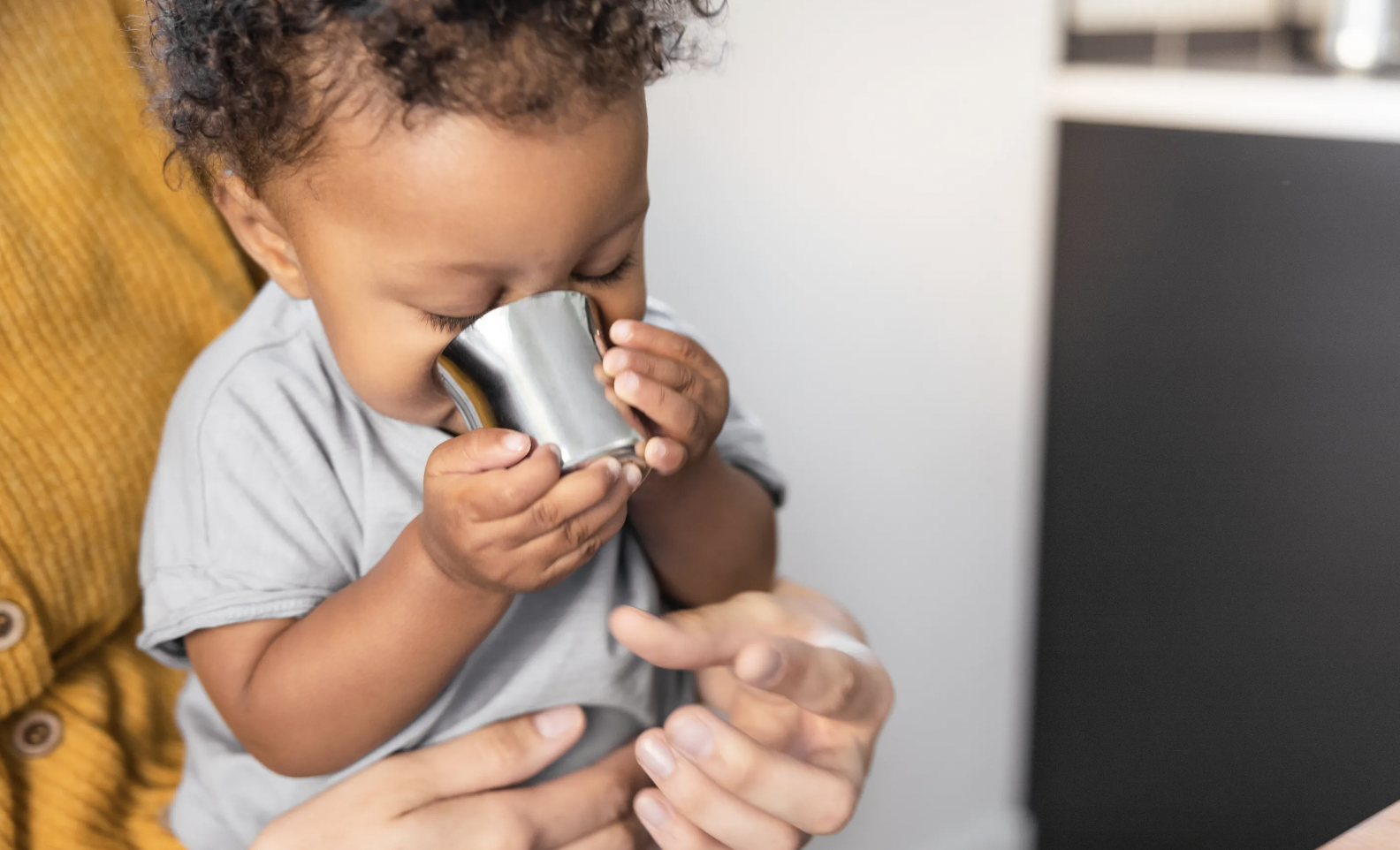So, you’ve been recommended to introduce an open cup BUT your little one is having trouble with it. It can be a little tricky for some to figure out how to manage the flow of liquids from an open cup.
Here are my go-to tips:
1. Slow the flow with a thicker liquid.
You can do this by offering liquid thicker than breast milk/formula or water. As thicker liquid moves slower this creates more time for our little ones to coordinate their swallow. The thicker liquid may also provide more feed-back about where it is in their mouth. You might like to use yogurt or puree in a cup. Over time, every few days, slowly thin it out with your liquid of choice.
2. Slow the flow with a different cup.
You can slow the flow of liquids with certain cups. Look for cups that have a lid with a small slit in it near the rim or that have inserts that push down into the cup. Slowing the flow of liquid gives little ones more time to manage the liquid and coordinate their swallow. These cups are particularly helpful if your little one likes to do it themselves.
3. A sip size.
Use a small cup and fill it with a sip size amount of liquid. This allows little ones to get the ideal amount of liquid making it easier for them to manage.
4. Size Matters.
Ensure the size of the cup matches the size of your little one’s mouth and hands, generally the smaller the better if they are having difficulty or are starting out.
5. Pacing.
If the child is happy for you to hold the cup and give them a drink, you can tilt the cup so just enough comes out for a small sip and then stand it back up.
6. Positioning.
Make sure your little one’s body is well supported when cup drinking. A supportive high-chair or your lap, ensuring their head isn’t tilted back.
It’s expected that they will cough a little when starting open cup drinking but it should decrease with practice. If your little one is coughing with most mouthfuls, most of the time, please check in with a feeding speech pathologist and your GP/paediatrician.
Other signs and symptoms that your little one is having difficulty with swallowing:
– frequent hiccups after eating and drinking
– recurrent respiratory infections
– recurrent fevers after eating/drinking
– changes in breathing, faster breathing or breathing stops
– eyes opening wide and stress cues
– frequent coughing
– wheezing
– eyes watering or red
– breathing and or voice sounds wet/gurgly
– frequent gagging
– skin turns a bluish colour
– vomiting
– back arching
– weight loss
These are some signs and symptoms of aspiration. Aspiration can also be silent (no signs or symptoms). Aspiration is when liquid or food enter the lungs. If aspiration happens often and with large amounts it can cause serious respiratory illnesses.
Open cups that slow the flow:
I like this 3 in 1 cup for 6 months and up
Discount code BOOBTOFOOD
I like these for over 12 months:
Written By Jamie Williams
Paediatric Speech Pathologist




+ show comments
- Hide Comments
add a comment